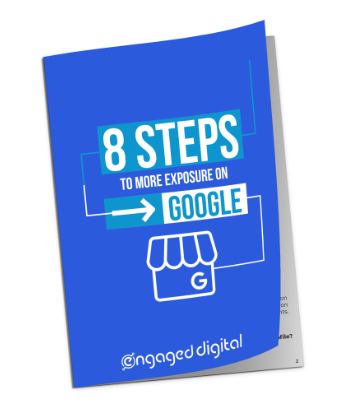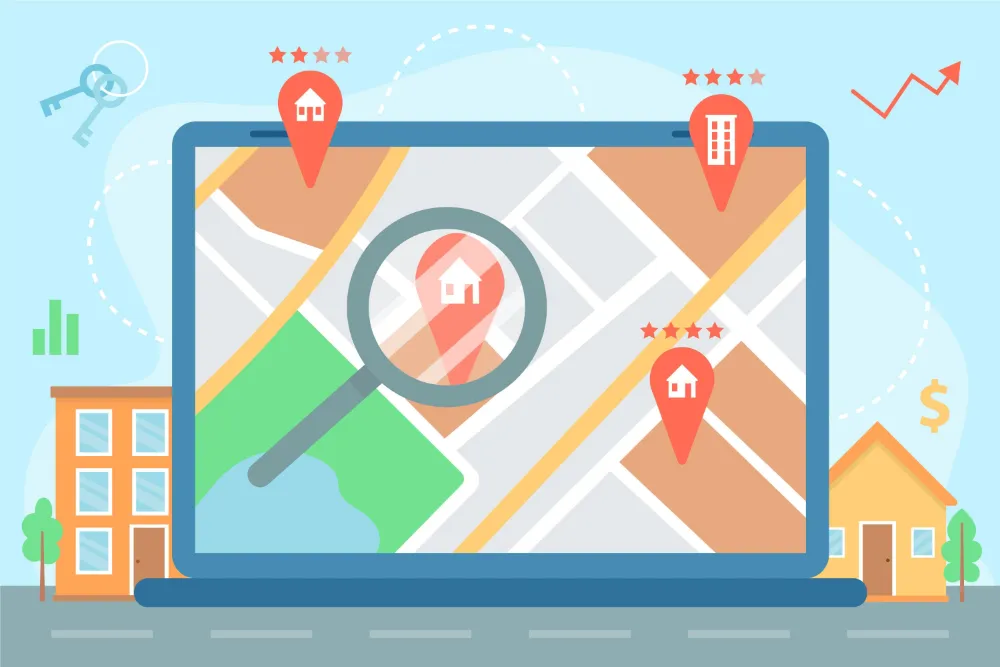Looking to boost your content marketing efforts? Want to establish a strong online presence and engage with your target audience? Blogging is the key to success. Incorporating blogging into your content marketing strategy can drive traffic, generate leads, and help you build credibility in your industry.
Blogging plays a crucial role in content marketing strategies. It provides a platform for sharing valuable information and insights that are relevant to your audience. By creating various types of content such as case studies, step-by-step guides, and problem-solving articles, you can position yourself as an expert in your field.
Blogging is a powerful tool for almost every business type. It allows you to address different stages of the marketing funnel by using various content formats. Whether it’s raising awareness about a particular problem or showcasing how your brand can solve it, blogs help guide potential customers through their buying journey.
So, if you’re ready to take your content marketing game to the next level and attract more prospects along the way, buckle up! In this blog series, we will explore the power of blogging and its impact on driving business growth. Stay tuned for valuable tips and tricks that will transform your content strategy!
Understanding the Difference Between Blogging and Content Marketing
Blogging and content marketing are two terms often used interchangeably, but they represent distinct aspects of a broader strategy. While blogging is a specific tactic within content marketing, it’s essential to understand the differences between the two.
Blogging as a Tactic
At its core, blogging involves regularly publishing articles or posts on a website. It serves as a platform for individuals or businesses to share their thoughts, expertise, and insights with an online audience. Blogs can cover various topics ranging from personal experiences to industry-specific knowledge.
Content Marketing as a Strategy
Content marketing, on the other hand, encompasses various channels and mediums through which valuable information is shared with target audiences. This can include creating and sharing engaging videos, interacting with customers through comments and messages, and publishing informative blog posts. This can include creating and sharing engaging videos, interacting with customers through comments and messages, and publishing informative blog posts. While blogging is primarily focused on written content, content marketing extends beyond that to include diverse formats such as videos, infographics, podcasts, and more.
Emphasis on Written Text
One key distinction between blogging and content marketing lies in their reliance on written text. Blogging predominantly revolves around creating engaging written articles that attract readership. The goal is to provide valuable information while building credibility and establishing thought leadership within a particular niche or industry.
Versatility of Content Marketing
Content marketing goes beyond just writing blog posts. It leverages multiple mediums to engage audiences effectively. For instance:
- Videos: Creating informative videos allows businesses to convey complex concepts in an engaging manner.
- Infographics: Visual representations of data or ideas are a powerful tool for blog marketing, as they make it easier for people to understand complex information quickly.
- Podcasts: Audio-based content provides an opportunity for businesses to connect with their audience through interviews, discussions, and storytelling.
By diversifying the formats used in content marketing strategies, businesses can reach wider audiences who may have different preferences when consuming information.
Attracting and Engaging Audiences
Both blogging and content marketing aim to attract and engage an audience; however, they approach this objective differently. Blogging relies on well-crafted written content to capture readers’ attention and provide valuable insights. It allows for in-depth exploration of topics, fostering a sense of trust and expertise.
On the other hand, content marketing leverages various mediums to cater to different audience preferences. By using videos, infographics, or podcasts alongside blogging efforts, businesses can engage with audiences who prefer visual or auditory content. This multi-channel approach ensures broader reach and increased engagement in content marketing.
While blogging is an integral part of content marketing, it’s crucial to recognize their distinctions. Blogging focuses primarily on written text and involves regularly publishing articles on a website. Content marketing encompasses various channels and formats beyond just writing, allowing businesses to engage audiences through videos, infographics, podcasts, and more. Both strategies aim to attract and engage audiences but employ different tactics to achieve these goals.
Understanding the difference between blogging and content marketing empowers businesses to develop comprehensive strategies that leverage the strengths of both approaches. By combining well-crafted blog posts with diverse forms of content creation, organizations can effectively communicate their message while catering to the preferences of their target audience.
Blogging vs Content Marketing: Key Distinctions
Content Formats and Scope
Content marketing encompasses all types of media, while blogging is limited to written content.Businesses have the flexibility to leverage a wide range of formats such as articles, videos, infographics, podcasts, and social media posts. This versatility allows them to connect with their audience through various channels and cater to different preferences.
On the other hand, blogging primarily focuses on written content published on websites or blogsites. While blog posts can incorporate images and videos, they predominantly rely on text-based information. This distinction highlights that blogging is just one component of a comprehensive content marketing strategy.
Objectives and Targeting
Blogging often targets specific keywords for search engine optimization (SEO) purposes, aiming to increase organic traffic to a website. By strategically incorporating relevant keywords into their blog posts, businesses enhance their chances of ranking higher in search engine results pages (SERPs). This approach helps attract targeted visitors who are actively searching for information related to those keywords.
In contrast, content marketing aims to provide value across multiple platforms beyond SEO considerations. The primary objective is not solely driving traffic but also establishing thought leadership, building brand awareness, engaging with the audience, and nurturing relationships. Rather than focusing solely on keyword optimization like blogging does, content marketing takes a more holistic approach by creating valuable content that resonates with the target audience.
Distribution Channels
While blogs are typically published on websites or dedicated blogsites, content marketing goes beyond these platforms. It involves distributing valuable content through various channels such as social media platforms (Facebook, Instagram), video-sharing sites (YouTube), podcast directories (Apple Podcasts), email newsletters, and even offline mediums like print publications or events.
Content marketers strategically choose distribution channels based on their target audience’s preferences and behavior. By diversifying the distribution channels used for sharing valuable content pieces like articles or videos, businesses can reach a wider audience and increase their brand visibility.
Comprehensive Strategy
Content marketing involves creating a comprehensive strategy that may include blogs as one component. This strategy encompasses planning, creating, distributing, and analyzing content to achieve specific business goals. It requires careful consideration of the target audience, market trends, competition analysis, and measurement of key performance indicators (KPIs).
On the other hand, blogging can be seen as a tactical activity within the broader content marketing strategy. While blogs play an essential role in attracting organic traffic and establishing expertise on specific topics, they are just one piece of the puzzle. Content marketers need to integrate blogging seamlessly into their overall strategy to maximize its impact.
The Benefits of Incorporating Blogging into your Content Marketing Strategy
Establishing Thought Leadership
One of the key benefits of incorporating blogging into your content marketing strategy is the opportunity to establish thought leadership in your industry or niche. By regularly publishing blog posts that showcase your expertise, you can position yourself as an authority and gain credibility among your target audience. This helps build trust and confidence in your brand, making it more likely for potential customers to choose you over competitors.
Improving Search Engine Visibility
Another significant advantage of blogging is its impact on search engine visibility. When you consistently create high-quality blog content that incorporates relevant keywords, search engines recognize your website as a valuable source of information. As a result, your website’s ranking in search engine results pages (SERPs) improves, leading to increased organic traffic. This increase in visibility not only exposes your brand to a wider audience but also enhances the chances of attracting potential customers who are actively searching for products or services related to your business goals.
Direct Communication with Your Audience
Blogs provide a platform for direct communication with your audience. Through comments and social media shares, readers can engage with your content and share their thoughts, questions, or feedback. This interaction enables you to better understand the needs and preferences of your target market while fostering a sense of community around your brand. By responding promptly and thoughtfully to comments and engaging in conversations on social media platforms, you can strengthen relationships with existing customers and attract new ones.
Building Trust through Valuable Information
By providing valuable information through blogs, businesses can build trust with potential customers. When consumers find helpful insights or solutions to their problems on your blog, they perceive you as knowledgeable and reliable. This perception increases their confidence in choosing your products or services when they have a need that aligns with what you offer. Sharing industry trends, expert tips, case studies, or practical advice demonstrates that you genuinely care about helping your audience, further enhancing your brand’s reputation and trustworthiness.
Incorporating blogging into your content marketing strategy offers numerous benefits for businesses. It allows you to establish thought leadership, improve search engine visibility, engage directly with your audience, and build trust through valuable information. By leveraging these advantages effectively, you can drive meaningful results that align with your business goals. So, start creating compelling blog content today and unlock the potential of blogging in boosting your overall marketing efforts.
Leveraging Blogging and Content Marketing for SEO Success
Optimizing blog posts with relevant keywords is a crucial aspect of any successful content marketing strategy. By incorporating targeted keywords throughout your blog posts, you can improve search engine rankings and increase organic traffic to your website.
Regularly updating your blog with fresh content is another essential element in leveraging blogging and content marketing for SEO success. Search engines value websites that are active and regularly publish new content. When you consistently provide valuable information through blog posts, it signals to search engines that your website is relevant and should be ranked higher in search results.
Sharing blog posts on social media platforms is an effective way to enhance brand visibility and drive traffic to your website. Social media provides an opportunity to reach a wider audience beyond your existing readership. By promoting your blog posts on platforms like Facebook, Twitter, and LinkedIn, you can attract new visitors who may not have discovered your website otherwise.
Incorporating internal and external links within your blog posts helps search engines understand the context and relevance of your content. Internal links connect different pages within your website, allowing search engines to navigate through the various sections of your site more effectively. External links to reputable sources provide additional credibility to your content.
To maximize the impact of blogging and content marketing on SEO, it’s important to conduct thorough keyword research. Identify the keywords that are most relevant to your target audience and align them with their search intent. By understanding the language they use when searching for information online, you can optimize your blog posts accordingly.
Setting smart goals for your content marketing efforts is also crucial. Determine what you want to achieve through blogging, whether it’s increasing organic traffic or generating leads for specific landing pages. By setting measurable goals, you can track the success of your efforts and make informed decisions about future strategies.
Utilizing templates can be a great way to streamline the process of creating high-quality blog posts consistently. Templates provide a structure for your content and ensure that you cover all the necessary elements, such as headings, subheadings, and relevant keywords. They also help maintain consistency across your blog posts, enhancing the overall user experience.
Maximizing Audience Engagement with Blogging and Content Marketing
Encouraging readers to leave comments on blog posts fosters engagement and builds a community around your brand. By creating a space for conversation, you invite your audience to share their thoughts, ask questions, and provide feedback. This not only enhances the reader’s experience but also demonstrates that you value their opinions. When readers feel heard and acknowledged, they are more likely to become loyal followers of your blog.
Utilizing social media platforms to share blog content increases reach and encourages audience interaction. With billions of active users on platforms like Facebook, Instagram, Twitter, and LinkedIn, social media provides an excellent opportunity to promote your blog posts and engage with your target audience. By sharing snippets or teasers of your content along with catchy captions or headlines, you can pique the interest of potential readers and drive traffic back to your blog.
Including visually appealing elements like images, videos, or infographics in blog posts enhances reader engagement. Visual content has the power to capture attention quickly and convey information in a more engaging way than plain text alone. By incorporating relevant visuals into your blog posts, you can break up long blocks of text, make complex concepts easier to understand, and create a more visually stimulating experience for your readers.
Responding promptly to comments and engaging in conversations with readers demonstrates a commitment to building relationships. When someone takes the time to leave a comment on one of your blog posts, it’s important to acknowledge their contribution by responding in a timely manner. This shows that you value their input and are actively interested in fostering meaningful interactions. Engaging in conversations with readers not only strengthens the bond between you and your audience but also encourages others to join the discussion.
The Power and Potential of Blogging and Content Marketing
Congratulations! You’ve now gained a deeper understanding of the difference between blogging and content marketing, as well as their respective benefits. By incorporating blogging into your content marketing strategy, you can unlock the true power and potential these two tools hold.
With blogging, you have the opportunity to connect with your audience on a personal level, engaging them in meaningful conversations and building trust. Through valuable content, you can position yourself as an industry expert, establishing credibility that sets you apart from competitors. Content marketing, on the other hand, allows you to strategically distribute this valuable content across various channels, reaching a wider audience and driving traffic to your website.
So what are you waiting for? It’s time to take action! Start by developing a comprehensive content marketing plan that includes regular blog posts filled with informative and engaging content. Remember to optimize your blog posts for SEO success by incorporating relevant keywords and providing value to your readers. By consistently delivering high-quality blog content, you’ll not only attract more organic traffic but also maximize audience engagement.
FAQs
How often should I publish new blog posts?
Publishing frequency depends on various factors such as your target audience’s preferences and available resources. However, it’s generally recommended to aim for at least one new blog post per week to maintain consistency and keep your readers engaged.
Can I use my blog for product promotion?
Absolutely! Your blog is an excellent platform for promoting your products or services indirectly. Rather than focusing solely on sales pitches, provide educational or entertaining content that subtly highlights how your offerings can solve problems or enhance the lives of your customers.
How long should my blog posts be?
While there is no set rule regarding length, longer-form blog posts (1,500 words or more) tend to perform better in terms of search engine optimization (SEO). However, remember that quality trumps quantity – focus on delivering valuable content, and the length will naturally follow.
How can I measure the success of my blogging and content marketing efforts?
To measure success, track key metrics such as website traffic, engagement (comments, shares), conversion rates, and social media reach. Utilize tools like Google Analytics to gain insights into your audience’s behavior and adjust your strategy accordingly.
Should I prioritize quantity or quality when it comes to blog posts?
Quality should always be your top priority. While consistency is important, it’s better to publish fewer high-quality posts than numerous low-quality ones. Focus on providing value to your readers through well-researched and engaging content that resonates with them.







